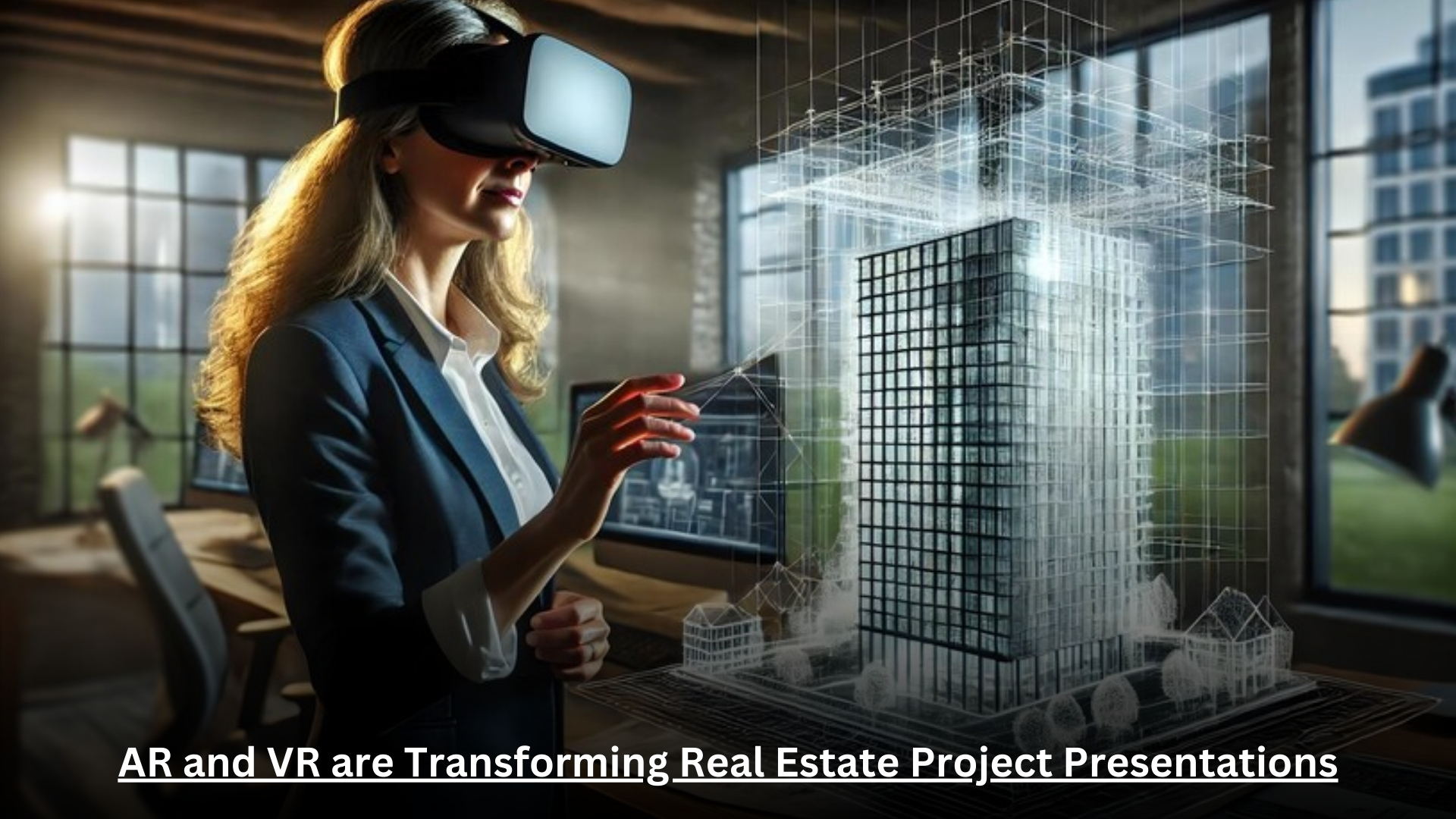
The real estate industry is undergoing a massive digital transformation, all thanks to the integration of augmented reality and virtual reality technologies (AR and VR). These high-end technologies have the ability to uplift the storyline of making real estate investment decisions through the engaging experience they offer. For both real estate developers and potential buyers, AR and VR offer exceptional perks that makes decision-making easy and improves visualization experience too. So, read this blog to learn the value of augmented reality and virtual reality in the real estate industry.
Both AR and VR are evolving industries by offering more interactive and immersive experiences. So, let’s dive into how augmented reality and virtual reality contribute to reshaping real estate project presentations:
One of the concerning challenges in real estate is making potential buyers visualize and understand properties that are either under construction or in the planning stages. Previously, floor plans, 3D renderings, and physical scale models have been used. However, in today’s date, AR and VR take project visualization to a whole new level.
With VR, buyers get a chance to take a virtual tour of the property from anywhere in the world. You don’t have to depend on imagination, but you can simply take a “walk through” explore layouts, and get a realistic sense of space.
On the other hand, with the help of augmented reality, a user can scan a physical space with a smartphone or tablet and see a virtual version of a property pop up in front of them. This helps visualize how a finished apartment will look or how a piece of furniture will fit.
lets potential buyers view digital overlays on actual environments. With the help of AR technology,
AR and VR technologies enable developers to provide potential buyers with fascinating experiences that significantly improve decision-making ability. Virtual reality walkthroughs offer a holistic view of the property, helping buyers understand its features, dimensions, and ambiance. This experience deletes errors and gives buyers confidence. This leads to faster and more informed purchasing decisions.
Moreover, AR technology can show relevant data and metrics on the buyer’s screen when they explore a property. Details such as square footage, amenities, and pricing can be accessed instantly. This gives a seamless blend of visual information and critical data.
For real estate developers and marketers, AR and VR provide powerful tools for curating engaging presentations. A well-designed VR tour can be a showstopper at real estate events. With just one gadget, i.e. headset, prospects will be able to experience as if they are physically present. This technology not only attracts attention but also leaves a prolonged impression.
AR is equally impactful in marketing, enabling interactive brochures, flyers, and property listings. An AR-enabled catalogue allows users to scan images and check 3D models of properties in their actual environment. Such dynamic content resonates more with tech-savvy buyers and improves brand perception.
One of the standout features of augmented reality and virtual reality is the ability to offer customization options during the presentation. Buyers can visualize different design choices, materials, and color schemes in real time. Whether it’s choosing the type of flooring or the layout of a kitchen, these interactive features make the experience more personal and enjoyable. Developers can even simulate different lighting conditions, times of day, and furniture arrangements, offering a comprehensive view of the finished project.
This level of customization builds trust with clients as they feel involved in the design process, making them more likely to proceed with the purchase.
Adopting augmented reality and virtual reality technologies may seem like an investment at first, but they prove to be cost-effective in the long run. Traditional marketing methods such as model homes, physical brochures, and large-scale mockups are resource-intensive and are not easily available. On the other hand, digital presentations using AR and VR can be updated easily and used repeatedly across various platforms.
For buyers, these technologies save time by reducing the need for multiple site visits. They can explore multiple properties remotely, compare options, and narrow down choices more efficiently. The flexibility and convenience offered by virtual reality & augmented reality can be an innovative solution in today’s highly competitive real estate market.
As the real estate industry continues to adopt digital innovations, AR and VR technology are set to become standard tools in project presentations. Their ability to offer realistic, engaging, and personalized experiences is modifying how properties are marketed and sold. Here comes Mayabious Group, a top virtual reality company specialized in AR and VR technology, is leading this transformation. With a focus on creating high-quality virtual reality and augmented reality experiences, we help real estate developers advance their project presentations and produce unique value to clients.
So, what are you waiting for? Get in touch with us today and take your real estate project to new heights!